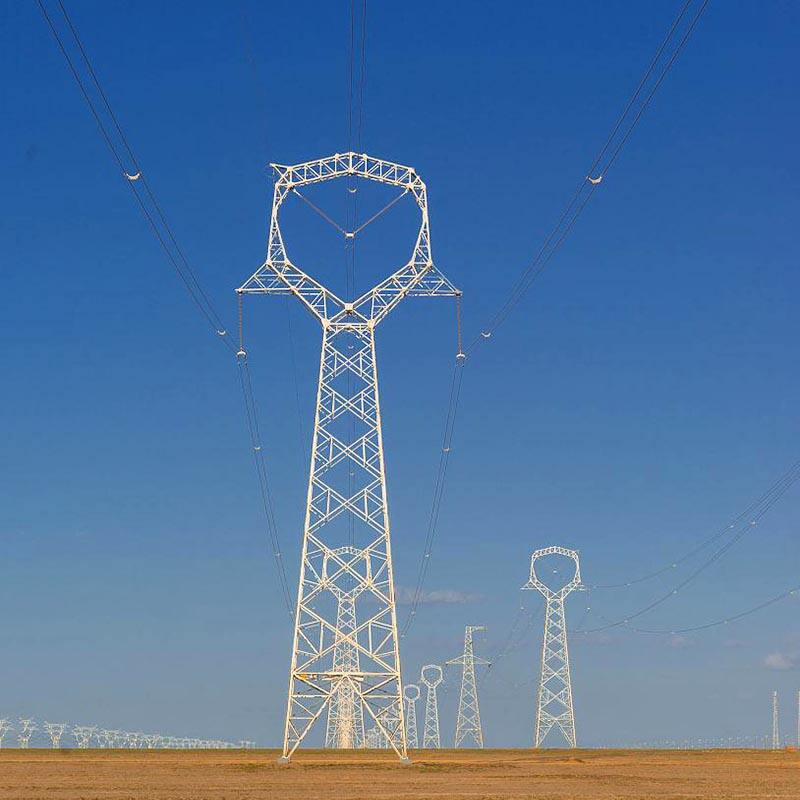Müasir Elektrik Dirəyi Quraşdırma Tələblərini Anlamaq
Elektrik sütunu quraşdırma, evlərə, bizneslərə və icmalara elektrik enerjisinin çatdırılmasında vacib rol oynayan elektrik paylayıcı sistemlərinin əsasını təşkil edir. Bu proses etibarlı elektrik ötürülməsi və paylanmasını təmin etmək üçün diqqətli planlaşdırma, texniki bilik və ciddi təhlükəsizlik protokollarına əməl tələb edir. Bu karmalı bələdçi elektrik dirəyinin quraşdırılmasının ilkin planlaşdırmadan son həyata keçirməyə qədər olan əsas aspektlərini araşdırır.
Quraşdırmadan Əvvəl Planlaşdırma və Sahə Qiymətləndirməsi
Coğrafi və Ekoloji Nəzərdən Keçirmələr
Hər hansı bir elektrik dirəyinin quraşdırılması layihəsinə başlamadan əvvəl, yerin ətraflı şəkildə qiymətləndirilməsi vacibdir. Bu, dirəyin sabitliyinə və xidmət müddətinə təsir göstərə biləcək torpaq şəraitinin, relyef xüsusiyyətlərinin və ekoloji amillərin qiymətləndirilməsini əhatə edir. Mütəxəssislər torpağın tərkibini, drenaj xüsusiyyətlərini və sel və ya eroziya kimi təbii təhlükələri nəzərdən keçirməlidirlər. Bu amillərin anlaşılmaları uyğun dirək spesifikasiyalarının və quraşdırma metodlarının müəyyənləşdirilməsinə kömək edir.
Texniki Tələblər və Spesifikasiyalar
Uğurlu quraşdırma üçün doğru dirəyin xüsusiyyətlərinin seçilməsi vacibdir. Bu, yerli qaydalar və layihə tələblərinə əsasən dirəyin hündürlüyü, diametri və material tərkibinin müəyyənləşdirilməsini əhatə edir. Transformatorlar, rabitə avadanlıqları və ya küçə işığı kimi dirəklərə bərkidilə biləcək əlavə yükləri nəzərə alaraq, yükdaşıma qabiliyyəti, küləyə müqavimət və elektrik təmizlik tələbləri kimi amillər diqqətlə hesablanmalıdır. Mühəndislər adətən bu dirəklərə qoşula biləcək transformatorlar, rabitə avadanlıqları və ya küçə işıqları üçün əlavə yükləri nəzərə alırlar.
Qanunvericiliyə Uyğunluq və İcazələr
Elektrik dirəklərinin quraşdırılmasında zəruri icazələrin alınması və yerli qanunlara uyğunluğun təmin edilməsi əsas addımdır. Bu, energetika şirkətləri, yerli səlahiyyətli orqanlar və digər maraqlı tərəflərlə əməkdaşlıq tələb edir. Ətraflı sahə planları, mühəndislik hesablamaları və təhlükəsizlik protokolları daxil olmaqla sənədlər düzgün şəkildə təqdim edilməlidir. Bu tələblərin başa düşülməsi və onlara riayət edilməsi gecikmələrin qarşısını alır və layihənin uğurla həyata keçirilməsini təmin edir.
Quraşdırma Avadanlıqları və Təhlükəsizlik Protokolları
Əsas Alətlər və Maşınlar
Elektrik dirəyinin təhlükəsiz və səmərəli quraşdırılması üçün düzgün avadanlıq seçimi vacibdir. Bu, çuxurların qazılması üçün burguları, dirəklərin yerləşdirilməsi üçün vinçləri və armaturun möhkəmləndirilməsi və elektrik komponentlərinin birləşdirilməsi üçün ixtisaslaşmış alətləri əhatə edir. Avadanlıqların optimal iş performansı və təhlükəsizlik üçün müntəzəm olaraq təmiri və yoxlanılması tələb olunur. Komandaların mexaniki nasazlıqlar nəticəsində layihənin təxirə salınmaması üçün ehtiyat avadanlığa daxil olması təmin edilməlidir.
Təhlükəsizlik Tədbirləri və Şəxsi Mühafizə
Elektrik dirəyinin quraşdırılması zamanı işçilərin təhlükəsizliyi ən yüksək prioritetdir. Bu, uyğun şəxsi mühafizə vasitələrinin (SMV) təmin edilməsini, enmədən mühafizə sistemlərinin tətbiq edilməsini və aydın rabitə protokollarının qurulmasını əhatə edir. Müntəzəm təhlükəsizlik brifinqləri və təlimlər fərqində olmağı qoruyur və qəzalardan qoruyur. Fövqəladə hallarda reaksiya planları mövcud olmalı və bütün komanda üzvlərinin asanlıqla əldə edə bilməsi təmin edilməlidir.

Quraşdırma Prosesi və Ən Yaxşı Təcrübələr
Torpağın Hazırlanması və Çuxurun Qazılması
Direyin sabitliyi üçün düzgün şəkildə çuxur hazırlamaq vacibdir. Bu, dəqiq ölçmələri, ehtiyatlı şəkildə qazma işlərini və dərinlik, həmçinin diametr tələblərinin yerinə yetirilməsini nəzərdə tutur. Torpağın vəziyyəti əlavə hazırlıq tələb edə bilər, məsələn, çınqıl geri doldurulması və ya beton fundamentlər. Direyin oturacağı ətrafında suyun toplanmasının qarşısını almaq üçün düzgün drenaj nəzərdə tutulmalıdır.
Direyin Quraşdırılması və Düzlənməsi
Düzgün direy quraşdırılması, düzlənmə, dərinlik və istiqamətə diqqətlə yanaşmağı tələb edir. Komandalar elektrik xətləri birləşmələri üçün direyin tamamilə şaquli və düzgün istiqamətləndirilməsini təmin etməlidir. Tez-tez səviyyələr və şaquli giroslar kimi ixtisaslaşmış avadanlıqlardan istifadə olunur. Uzunmüddətli sabitlik üçün düzgün geri doldurma və sıxılma texnikası vacibdir.
Quraşdırma Sonrası Prosedurlar
Keyfiyyət Nəzarəti və Sinqlama
Quraşdırma işlərinin sona çatmasından sonra direklərin bütün təhlükəsizlik və performans tələblərini qarşıladığını təmin etmək üçün kompleks testlər aparılır. Bu, sabitliyin yoxlanılmasını, istiqamətləndirmənin ölçüsünü və elektrik qoşulmalarının düzgün olduğunu təsdiqlənməsini əhatə edir. Bu testlərin sənədləşdirilməsi gələcək istinad və uyğunluq məqsədləri üçün saxlanılmalıdır. Testlər zamanı aşkar edilən hər hansı problem dərhal həll edilməlidir.
Tikintinin Planlaşdırılması və Sənədləşdirilməsi
Uzunmüddətli etibarlılıq üçün texniki baxım cədvəlinin təsis edilməsi vacibdir. Bu, müntəzəm yoxlamaları, qabaqlayıcı təmir prosedurlarını və hər hansı təmir və ya dəyişikliklərin sənədləşdirilməsini əhatə edir. Ətraflı qeydlərin yaradılması direklərin vəziyyətini vaxtla izləməyə və gələcək təmir ehtiyaclarını planlaşdırmağa kömək edir. Rəqəmsal sənədləşdirmə sistemləri bu prosesi asanlaşdıra və vacib məlumatlara çıxış imkanını yaxşılaşdıra bilər.
اورتاق چتین لیک لر و اونلارا حل لر
Hava Şəraitinə Bağlı Quraşdırma Problemləri
Pis hava şəraiti elektrik dirəyinin quraşdırılmasına ciddi təsir edə bilər. Yağış, qar və ya ekstremal temperatur şəraitində iş cədvəlində dəyişiklik edilməsi və ya xüsusi quraşdırma üsullarının tətbiqi tələb oluna bilər. Planlaşdırılmış fəaliyyətlərin pozulmasının qarşısını almaq və təhlükəsizlik və keyfiyyət standartlarını saxlamaq üçün ehtiyat planları və hava şəraiti monitorinq protokolları vacibdir.
Yeraltı kommunikasiyalarla bağlı problemlər
Mövcud yeraltı kommunikasiyalarla yaranan ziddiyyətlərin idarə edilməsi diqqətli planlaşdırma və koordinasiya tələb edir. Bu, kommunikasiyaların dəqiq xəritələnməsini, yeraltı sistemlərin düzgün nişanlanmasını və təhlükəsiz qazma tədbirlərinin həyata keçirilməsini əhatə edir. Kommunikasiya şirkətləri ilə sıx əməkdaşlıq və müasir aşkarlama avadanlıqlarından istifadə mövcud infrastrukturun zədələnməsinin qarşısını almağa kömək edir.
TEZ TEZ VERİLƏN SORĞULAR
Quraşdırılmış bir elektrik dirəyinin tipik ömrü nə qədərdir?
Elektrik dirəyinin orta istifadə müddəti materialın tərkibindən və ekoloji şərtlərdən asılı olaraq dəyişir. Taxta dirəklər adətən 30-40 il, polad və ya beton dirəklər isə düzgün təmir və baxım şərti ilə 50-75 il dayanır. Mütəmadi yoxlamalar və emal prosedurları dirəyin ömrünü əhəmiyyətli dərəcədə uzada bilər.
Elektrik dirəyi nə qədər dərinlikə quraşdırılmalıdır?
Dirəyin qazılma dərinliyi üçün standart qayda adətən dirəyin hündürlüyünün 10%-i artı iki futdur. Bununla belə, bu göstərici torpağın xüsusiyyətlərindən, dirəyin spesifikasiyalarından və yerli tələblərdən asılı olaraq dəyişə bilər. Dəqiq dərinliyin təyini üçün peşəkar mühəndislər konkret sahənin tələblərini nəzərə almalıdır.
Elektrik dirəyi ətrafında hansı təhlükəsizlik aralığı tələb olunur?
Minimum aralık tələbləri gərginlik səviyyəsindən və yerləşdiyi yerdən asılı olaraq fərqlənir. Ümumiyyətlə, dirəklər binalardan, digər kommunikasiyalardan və bitkilərdən müəyyən məsafədə saxlanılmalıdır. Müxtəlif hallar üçün dəqiq aralıq tələblərini yerli elektrik qaydaları və energetika şirkətinin standartları müəyyən edir.

